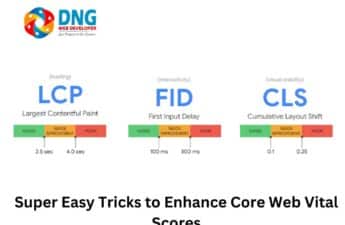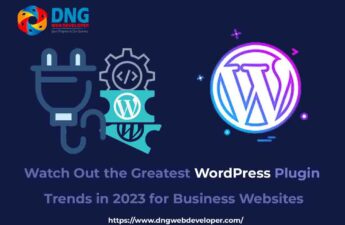
Everyone wants a quick-loading mobile web page in today’s fast-paced environment since they do not want to wait so long for the page to load. They urgently require everything. To give every visitor a better experience, the web development community has discovered many techniques to increase the loading speed and enhance the performance of websites.
Google has started a new project called AMP, or Accelerated Mobile Pages, to speed up the loading of websites. This open-source platform was created to assist publishers in enhancing the readability and speed of their web pages. The objective of AMPs is to make the loading speed of the web pages faster and improve their SEO performance. AMP has multiple advantages and by using AMP you can easily increase the SEO rankings of your web page. However, everything has some advantages as well as some disadvantages. Now let’s have a look at some pros and cons of using Google Accelerated Mobile Pages.
Advantages and Disadvantages of Using Google Accelerated Mobile Pages
Any programmer can access and use the AMP, or Accelerated Mobile Pages, a code library to apply it to their websites. The AMP library enables content on mobile pages to load more quickly and with less data usage than a typical mobile page. AMP is a condensed version of HTML that uses streaming technology to quickly load webpages by retrieving content from online sources.
An early study found that compared to conventional mobile-optimized pages, Google Accelerated Mobile Pages load four times faster and use eight times less bandwidth. The original plan was to offer an open-source framework that would enhance mobile usage while also speeding it up. According to a study, Google Accelerated Mobile Pages load four times faster and consume eight times less bandwidth than regular mobile-optimized pages. The original idea was to provide an open-source system that would accelerate and improve mobile usage.
Now we are going to discuss the advantages and disadvantages of Google Accelerated Mobile Pages. This guide will help you to understand whether AMP is necessary for your website or not.
Major Advantages of Google’s Accelerated Mobile Pages
First, let’s discuss some great advantages of using Google’s AMP.
1. Increase Website Traffic
Mobile users with unreliable internet connections can easily access lightweight AMP content. Additionally, a faster page load time enhances user experience, which raises the likelihood that visitors will stay on your website longer. So, this is one of the major benefits of Google’s AMP.
2. Decrease Bounce Rates
Visitors are more likely to stay on your site when your pages load quickly. According to a Google study, if a website takes more time than 23 seconds to load, 53% of visitors will leave the page. Publishers who use AMP can see a 2x increase in the number of time visitors spend on a page. Your site’s bounce rate can be decreased using AMP, which also helps your site rank higher. So, you can get this great advantage of AMP if you use this on your site.
3. Boost Conversion Rates
This is one of the most significant advantages of AMP. A website’s conversion rate might quickly rise with the help of AMP. Because e-commerce businesses constantly need to increase their conversion rates, AMP landing pages are quite helpful in this regard.
4. Boost the Loading Speed of A Website
The most astonishing benefit of Accelerated Mobile Pages is this one. Since they are typically the pages that load more quickly, AMP landing pages very effectively optimize the loading performance of any website. Therefore, practically every web developer employs AMP to increase the performance of websites.
5. Expand the Ad Views
The HTML is coded with AMP in a way that improves the general usability of banners and pictures. Because of the increased ad viewability rate, publishers have more options to monetize their content.
Cons of Google Accelerated Mobile Pages
While AMP can enhance your site’s ranking and the usability and efficiency of your content for mobile readers, it does have limitations and disadvantages that you should take into account before implementing AMP for your website. Let’s have a look at some disadvantages of Google Accelerated Mobile Pages.
1. Tracking Issues
This is one of the main disadvantages of AMPs. AMPs are incompatible with the tracking you have previously put in place. Unlike normal pages, even those that are mobile-ready, they are saved and tracked in a separate way. While there will eventually be solutions, for now tracking requires a specific effort and resources that you might not have right away.
2. Giving Out Cached Pages
One of the ways AMP speeds up page loading is by enabling Google to provide users with a cached copy of an AMP-enabled website. Google owns the pages that show up in search results, so you are not even serving the material you initially developed; rather, it is just a copy that has been cached and kept somewhere else.
3. Limitations of CSS & JavaScript
The majority of the time, AMPs do not have much in the way of branding or personality. That is large because using JavaScript and, to a lesser extent, CSS, by web designers results in significantly slower load times. Mobile pages speed up dramatically by reducing showy features, but it compromises your branding and aesthetic.
4. The Implementation Process Is Difficult
This is the main disadvantage of Accelerated Mobile Pages. Though the AMP Project standards are meant to be simple to apply, conflicting information and frequent updates to the standard might make things difficult. Although AMP integration tools are available for some content management systems (CMSs), including WordPress, they frequently clash with well-liked SEO tools like Yoast. Implementing AMP is challenging.
5. Leads and Subscribers Are Absent
Email pop-ups and any sidebar widgets, carefully positioned social sharing buttons, posts, and much more won’t appear on AMP pages. You must know this major disadvantage of using Accelerated Mobile Pages. By using AMP, one can also lose email subscribers and leads.
Conclusion
One can choose AMP for a better user experience, but one must give up other great features like widgets, lead generation, connected adverts, etc. We hope that now you have a thorough understanding of all the pros and cons of using Google AMPs. Now, this is up to you whether you will use AMP on your site or not. Feel free to contact DNG Web Developer, the leading web development firm in Ahmedabad, if you want to learn more about AMP.




